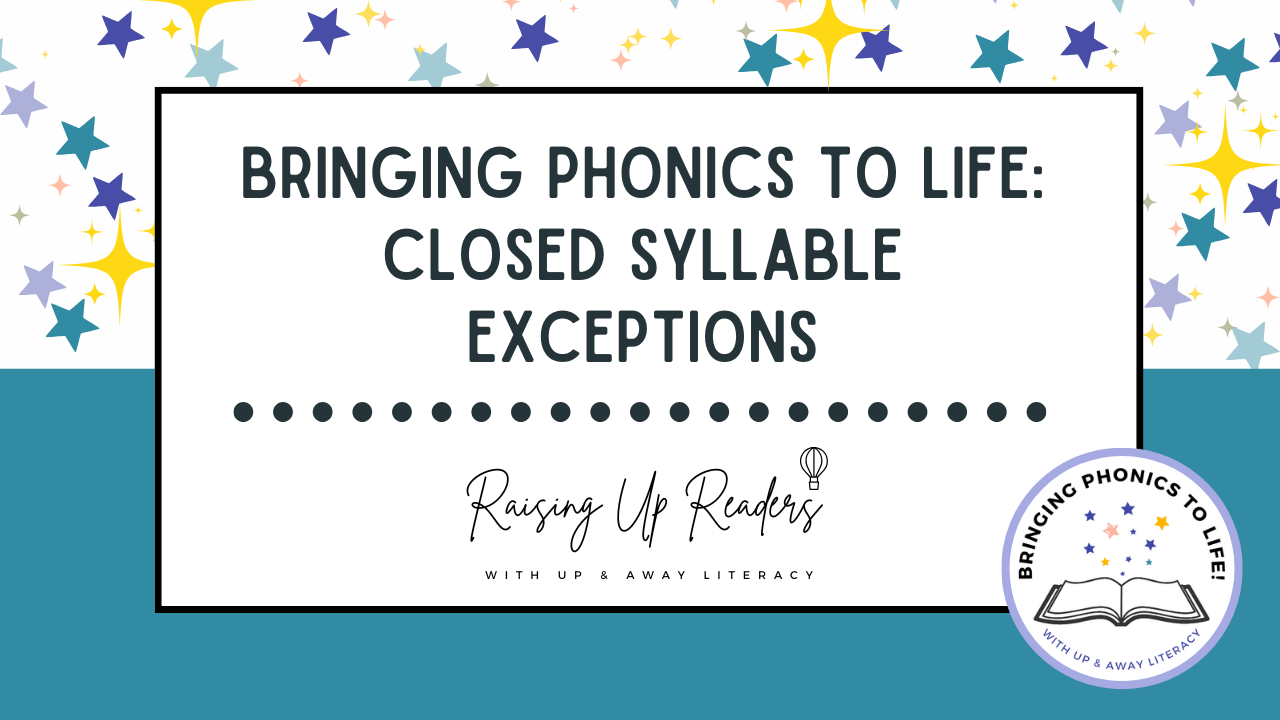
Bringing Phonics to Life: How to Teach Closed Syllable Exceptions
Mar 19, 2025
Have your students ever asked you a question that you didn't know the answer to? My hand is definitely raised! Questions about closed syllable exceptions might be on the list of your, "I don't know. Let's look it up!" answers, so that's what exactly we're going to explore in today's blog post!
What are closed syllable exceptions?
First, let’s get on the same page with some vocabulary. A closed syllable is a syllable with a single vowel followed by at least one consonant. The vowel is "closed in" by the consonant and it makes it's short sound. An exception, according to Merriam-Webster, is a case to which a rule does not apply.
Which means, some words are technically closed syllables (ex. kind, most, told) but the vowel doesn't make it's short sound, like expected. You might be saying to yourself, “Why is English like this!?”, but have no fear, we’ll explain…
There are several reasons for the spelling of these words, but most are related to their history. For example, kind used to be spelled kinde and wild was spelled wilde. It could also be because of the way these words used to be pronounced.
You don't have to teach your students the etymology of these words to help them understand the concept (but you definitely could if you think your students would benefit from it!)
Now, let's chat about how we can bring closed syllable exceptions to life!
How can you bring phonics to life with closed syllable exceptions?
To help your readers remember the sounds of the closed syllable exceptions, we'd like to introduce you to our friend, the Kind Old Wild Ghost!

The Kind Old Wild Ghost helps us remember that the patterns -ind, -old, -ild and -ost are closed syllable exceptions.
When you think about the fact that even words have history, it's easier to remember these special patterns.

We teach our students that when they see one of these exceptions in a word, they can code it by circling the group of letters. This reminds them to stop and think about the special sound these patterns make.
When should you teach closed syllable exceptions?
In our scope and sequence at Up & Away Literacy, we wait to teach this concept until students have a firm foundation of closed syllables and understand that vowels have a short and long sound.
Activity Ideas
Practicing this concept can be as simple as...
- Read sentences with closed syllable exceptions. If you read the exception correctly have your students give you a thumbs up, but don't always read the exception correctly so your students can catch the mistake and give you a thumbs down. Then correct the mistake and chat about it.
- Write a word on the board. Have your students copy the word down and then circle the closed syllable exception with a fun gel pen, highlighter, marker, etc.
- Do a word sort. Closed Syllable versus Closed Syllable Exception
- We also have loads of resources including: word lists, decodable readers (fiction & nonfiction), centers and games to practice this skill (click HERE).
Time for a FREEBIE!
Help your students remember closed syllable exceptions with our freebie anchor chart. Click the image below to get your free download. Enjoy! 😊
Done-For-You Resources!
You may already have a phonics curriculum that you have to follow, but often times the section on small groups and differentiation is slim (if it exists at all). And we both know that real growth happens in well-planned small groups. That's where Launching Literacy comes in!
For $0.39 a day, you'll get access to everything in the membership for an entire year, PLUS we'll be with you every step of the way. We've even added a request box! Send us your literacy wishes and we'll do our best to take your ideas and turn them into resources that you can actually use 😊
Click the logo below to learn more about the membership and join!

Stay in-the-know!
New tips, courses, and resources delivered straight to your inbox. Sign up for our email list below so you don't miss a thing!


